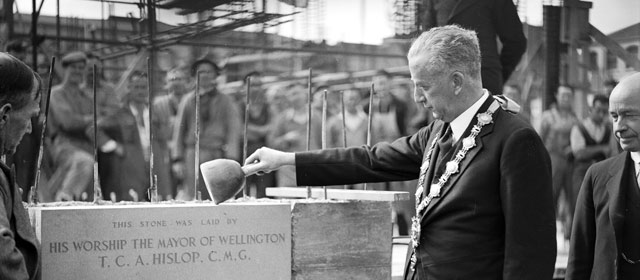Story summary
Some of the tasks of government are carried out at a local level to benefit the local population. Local government is funded through rates (charges based on the value of properties), subsidies from central government, income from trading, and user charges.
Local government in the 2000s
In 2022 New Zealand had 11 regional councils. They focused on environmental issues, including plant and animal pests, river management and flood control, and land-transport planning.
There were 67 territorial authorities: 12 city councils, 54 district councils, and Auckland council (both a territorial and a regional authority). These councils dealt with issues such as recreation, roading, resource management, sewerage and water.
The 20 district health boards were abolished in mid-2022.
Elections for local authorities were held by postal ballot every three years.
Early local government
Residents of settler communities set up their own public works boards and charged rates to pay for roads, bridges and sewers. These boards were officially recognised from 1845.
In 1853 the provinces were set up. Provincial governments created local government bodies such as boards and boroughs. After the provinces were abolished in 1876, rural areas were divided into counties. Most towns were divided into boroughs, and special-purpose authorities administered services such as health, education, river control and water supply.
By 1912 there were almost 4,000 territorial authorities of various sorts. Attempts to limit their number were unsuccessful.
Cities
By the early 20th century councils in main cities provided electricity and gas networks, piped water, tramways, parks, libraries and swimming pools. Some also provided housing, sports fields, museums and zoos.
In 1963 the Auckland Regional Authority was set up to coordinate services such as drainage and waste collection. Other regional authorities were established later.
Reform
In 1989 the central government made major changes to local government. Around 850 organisations were consolidated into 86 local authorities. These were restructured so a non-elected chief executive employed staff and managed operations. Commercial and non-commercial activities were separated.
After 2000
From 2002 councils had to develop long-term community plans. Groups of local residents could set up community boards.
In 2010 Auckland Council was set up to administer the Auckland region, replacing the Auckland Regional Council and six territorial authorities.





